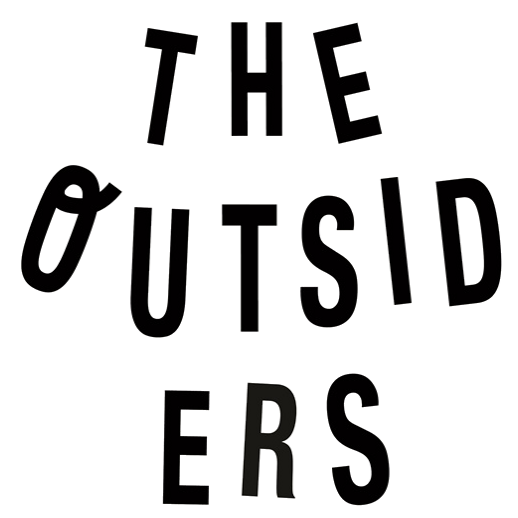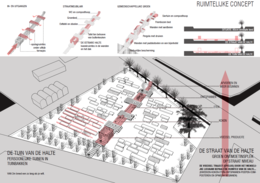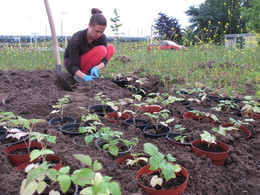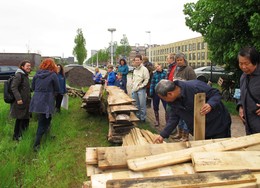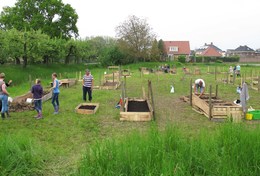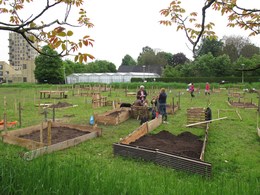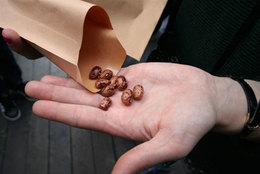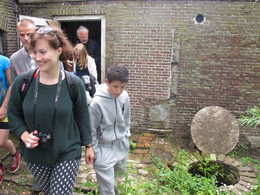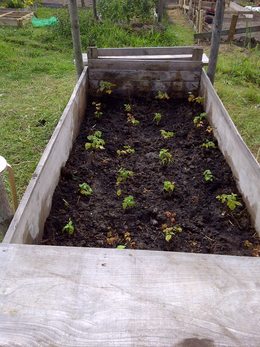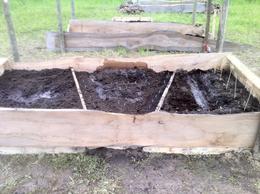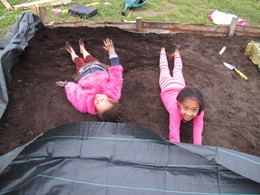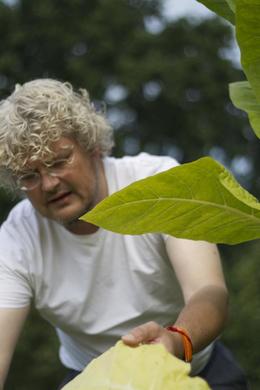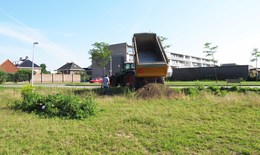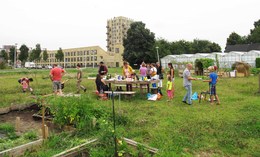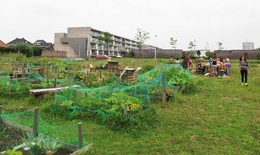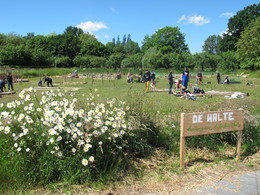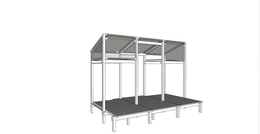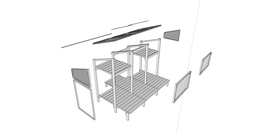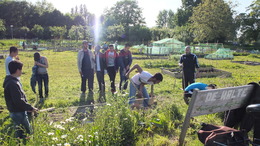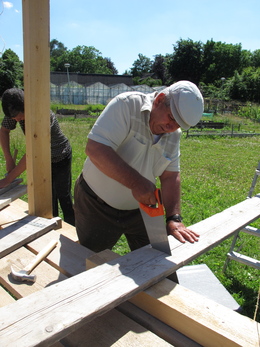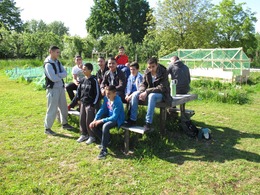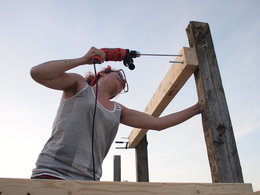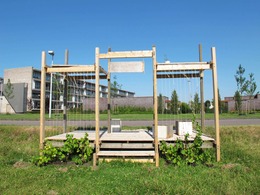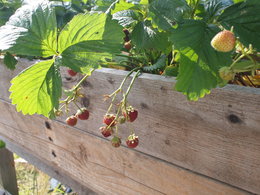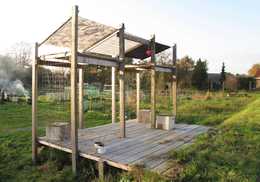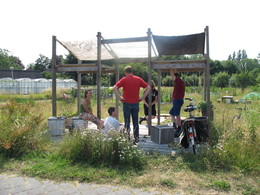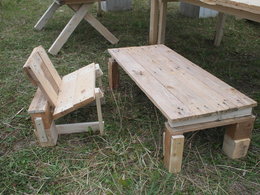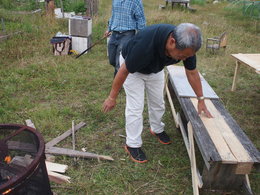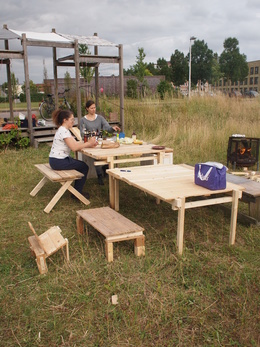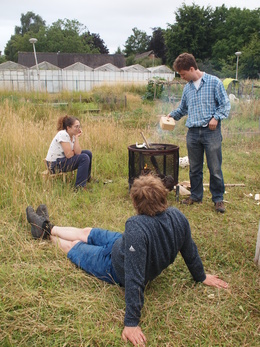
NL/ENG below
de Halte is een buitengewoon buitenbuurthuis.
De Halte was gelegen op een stuk braakliggend terrein tussen de Enghlaan en de Operettelaan in Leidsche Rijn, wat door de recessie beschikbaar was gekomen. Het bestond uit individuele stukjes waar ieder mens voor zijn eigen moestuintje kan zorgen en een gezamenlijk deel waar bewoners elkaar tegenkomen en waar ze samen zorg voor dragen.
Bij de entree van het terrein stond de eetbare bushalte, een bouwwerk tussen de straat en het terrein waarin eetbare planten groeiden die iedereen kon pakken. Achter op het terrein stond een bijenkast.
de Halte ( the Stop ) was based in Leidsche Rijn, the Netherlands.
Leidsche Rijn is the biggest actual area in construction in Utrecht, the Netherlands. The construction started in the year 1997 and it will host 30.000 houses by 2025, when the region
will give a shelter to approximately 80.000 residents.
Historically Leidsche Rijn's landscape were characterised by green fields and farms. This farms
are by now surrounded with new buildings of different architectonical styles, mostly of the farmers left so that the farms could be used for urban purposes. On the other side for the new comers the reality seems quite apocalyptic…everything is under construction, housing, schooling and shopping, which forms in this neighbourhood an uncomplete and uncomfortable envinroment. Residents are forced to travel downtown to find good quality products because of facilities absence in the immediate area, therefore a big amount of energy goes into transport. Together with locals , we were offered by the Municipality of Utrecht on to build a vacant lot, a garden with an outdoor community centre : called 'de Halte' .
'de Halte' consisted of a plot where residents could cultivate vegetables and fruits but mostly meet with each other. the Outsiders had build de Halte from day one along with the residents, so as to stimulate mutual involvement. During the year 2015 we had erected an eatable bus stop where we could spend our summer days.
In 2016 we had leave the terrain originally designed for the building of four villas.
